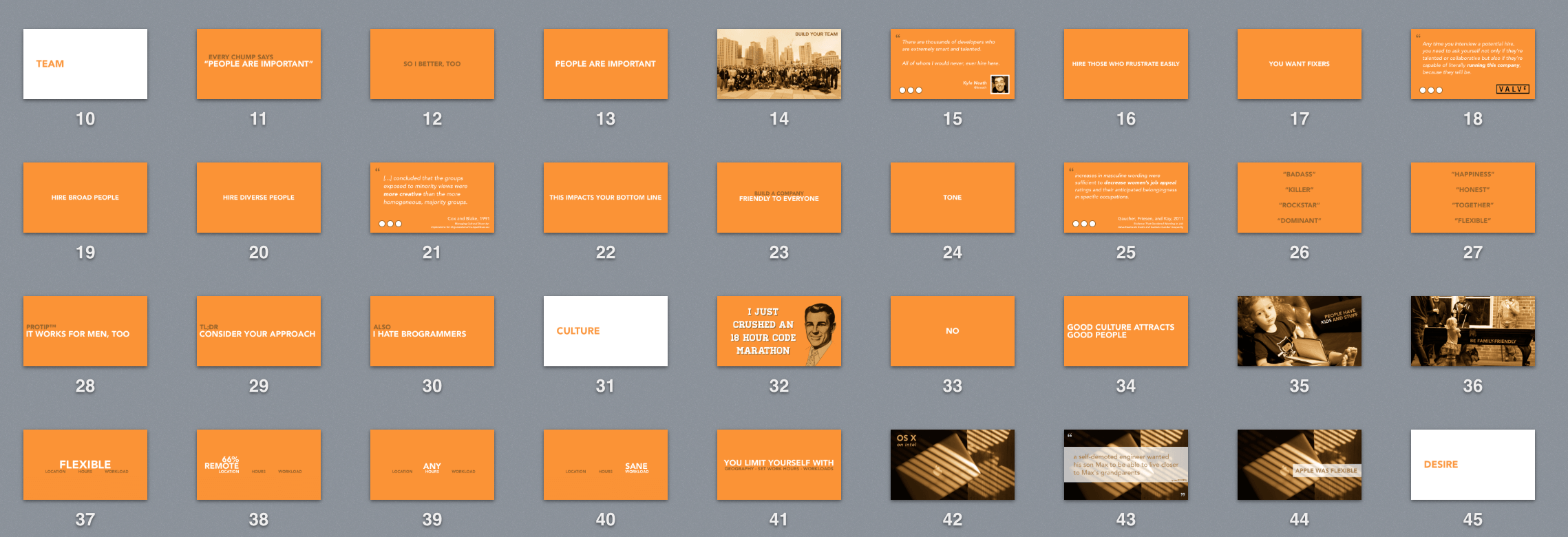Color
If you wrap your hands around your neck long enough, your face is probably going to change color. If you keep them there too long, then your face is going to die.
Colors are important in slides, too.
Identity
Colors are all pretty to look at and junk, but they serve a real purpose: with smart usage of color, you can make it easier for your audience to follow you around as you jump from slide to slide.
Choosing a great color palette for your talk can help you visually break out different sections, underline recap areas, and overall make your presentation look, well, presentable.
Finding colors
If you’re like me (and for that I sincerely apologize), you probably haven’t the faintest idea of how to come up with colors that look great together. Don’t worry: you can cheat.
Head to a place like COLOURlovers and look at their color palettes. They have millions. Browse around and find something that tickles your fancy.

Usually I look for bright colors that go well on projectors. That means colors with a lot of contrast. For example, choose a dark, a light, and an accent. That way you can layer the dark on the light and still read it from in the way back of the room you’re giving the talk.
Importing colors
Once you’ve found the colors you want, you’ll want to get them into your slide deck.
In Keynote, you can hold ⇧Shift + ⌘ + C to open up the Colors palette. Click
the magnifying glass and you can suck your selected color into your slide deck.
In the third tab of this panel, though, you can create a new palette. This is
usually where I stash all of my colors for the talk so it’s readily at hand for
later.
Using colors
Try to be conscious about how you use colors. I usually try to use them to break up different sections of my talk (see this post about Outlining for more about sections). In The Product is the Byproduct, I used bright white slides to denote new sections:

This is also great for you, too. In this case, I get a nice clean white screen that’s visually different enough for me to realize “Okay. I hit a new section. I can take a sip of water, I can take a breath, I can let people catch up.”
Similarly, I’ll also usually offset the colors in the introduction and the closing. If you’re using bright orange the entire talk and you suddenly hit four white slides in a row, it starts to feel different, like the natural close of your talk. Use that to your advantage.